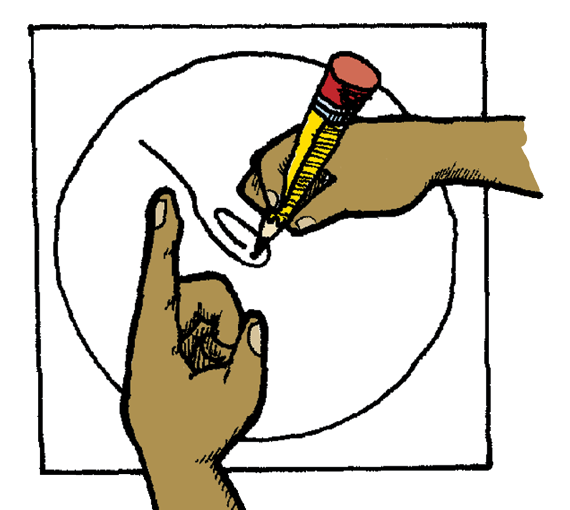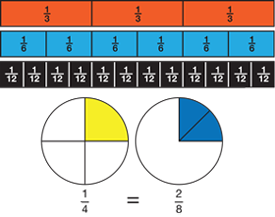This Workshop provides opportunities for students to address missing concepts, practice skills, or extend their learning as needed. Students explore representations of fractions: numbers, words, circle pieces, rectangles, and number lines. They practice finding equivalent fractions and comparing fractions using tools and strategies. Students choose to play Fraction Fill with circle pieces or Fraction Trails with number lines to develop flexibility representing fractions.
Content in this Lesson
- Representing and identifying fractions (e.g., proper, improper, mixed number) using area models, drawings, number lines, words, symbols, and number sentences [E1].
- Recognizing that equal fractional parts of a unit whole are the same size (e.g., all fourths of a rectangle are the same size) [E2].
- Identifying the unit whole when given a fractional part of a whole [E3].
- Finding equivalent fractions using tools (e.g., area models, number lines) and multiplication and division strategies [E4].
- Decomposing fractions into the sums of smaller fractions (e.g., 3/4 = 1/2 + 1/4) [E5].
- Comparing and ordering fractions using tools (e.g., area models, number lines), benchmarks, and multiplication and division strategies to find common denominators [E6].
Daily Practice and Problems W–Z
Assessment in this Lesson
| Assessment | Expectation Assessed |
|---|---|
|
Show and Compare Fractions |
|
|
Show and Compare Fractions |
|
|
Show and Compare Fractions |
|
|
Show and Compare Fractions |
|















 and
and  since 15 is divisible by both 3 and 5.
since 15 is divisible by both 3 and 5.  and
and  .
. ,
, ,
, are equivalent to each other, and
are equivalent to each other, and  and
and  are equivalent to each other.
are equivalent to each other.